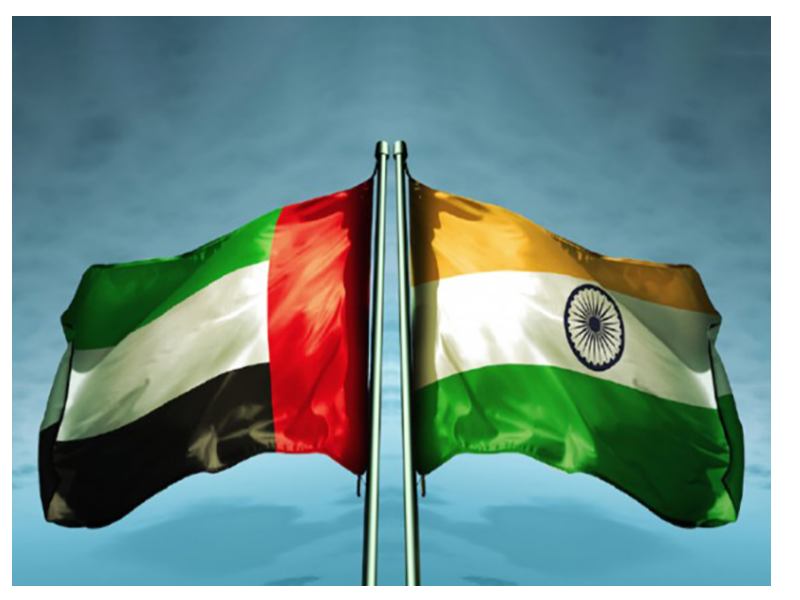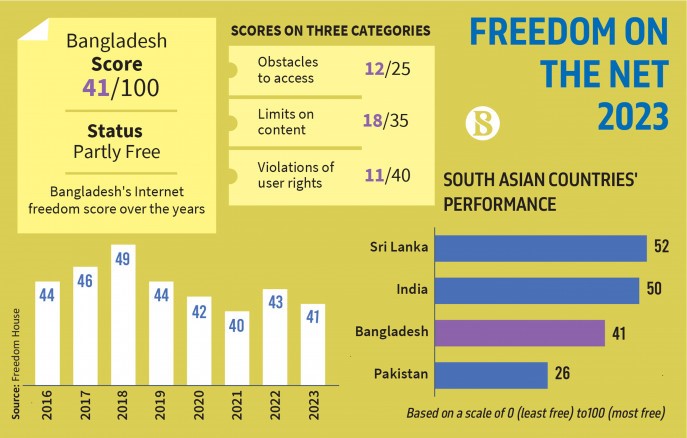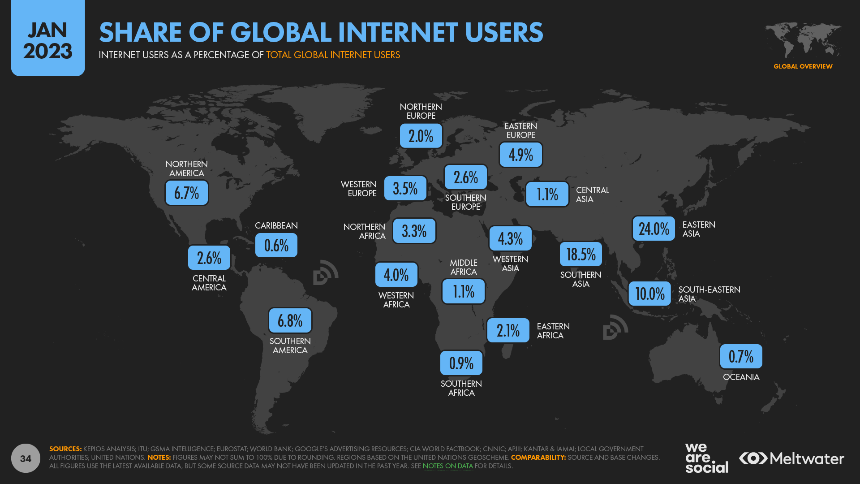- India accounted for 20% global pre-term births: Lancet Study
- RuPay Domestic Card Scheme Agreement
- Global Internet Freedom Decline in 2023
- Ageing World: Addressing Mental Health Challenges in the Elderly
- Nobel Prize in Literature 2023
India accounted for 20% global pre-term births: Lancet Study
Context:
In a recent study published in The Lancet, it was revealed that India had the highest number of pre-term births in the world in 2020, totaling approximately 3.02 million cases.
Pre-term birth refers to the delivery of a baby before 37 weeks of gestation, and it is a significant contributor to neonatal mortality, particularly among infants under the age of five.
The Burden of Pre-term Births
- In 2010, India witnessed a staggering 49 million pre-term births. Some common factors associated with pre-term births include maternal illness, multiple pregnancies (such as twins or triplets), and cervical issues.
Key Findings from the Study
- India accounted for more than 20 percent of all pre-term births globally, followed by Pakistan, Nigeria, China, Ethiopia, Bangladesh, the Democratic Republic of the Congo, and the United States.
- Interestingly, the global pre-term birth rate remained relatively stable between 2010 (9.8 percent of live births) and 2020 (9.9 percent of live births).
- Notably, approximately 15 percent of all pre-term births during this period occurred before 32 weeks of gestation, emphasizing the urgent need for improved prenatal and neonatal care.
International Comparisons and Declining Trends
Furthermore, the study identified 13 countries that experienced a decline in pre-term births of 0.5 percent or more.
These countries include Austria, Brazil, Brunei, Czechia, Denmark, Germany, Hungary, Latvia, the Netherlands, Singapore, Spain, Sweden, and Switzerland.
Concerns and Unmet Needs
- The study raised several concerns, such as the long-term disabilities faced by many survivors of pre-term births, including learning difficulties, behavioral disorders, and sensory impairments.
- Additionally, the true global burden of pre-term births remains largely unknown due to insufficient data collection, particularly in low-income and middle-income countries.
Recommendations for Addressing the Issue
The report attributes this data gap to inadequate record-keeping, imprecise measurement of gestational age, and the absence of systematic data collection and reporting mechanisms for pre-term births.
To address these challenges, the report presents several recommendations:
- Data Quality Enhancement: Focus on improving data quality in regions with high pre-term birth rates, particularly in southern Asia and sub-Saharan Africa.
- Prevention and Quality Care: Prioritize investments in programs aimed at preventing pre-term births and ensuring the delivery of evidence-based, quality care when pre-term births do occur.
- Strengthening the Workforce: Implement measures to enhance the workforce involved in delivering government health schemes, such as Accredited Social Health Activists (ASHAs) and auxiliary nurse midwives.
- Expanding Eligibility Criteria: Expand eligibility criteria for existing schemes to include individuals who are most vulnerable but currently excluded.
- Monitoring and Accountability: Define clear criteria for ideal institutional deliveries to improve the monitoring of scheme outcomes.
- Data Transparency and Incentives: Encourage healthcare institutions to regularly publish morbidity and mortality data, and provide incentives to manage the high patient load effectively.
Conclusion
Addressing the issue of pre-term births in India and globally requires a multifaceted approach, including data improvement, healthcare infrastructure enhancement, and expanded eligibility criteria for government health schemes.
RuPay Domestic Card Scheme Agreement
Context:
- In recent developments, International Payments Limited (NIPL) has forged a strategic partnership with Al Etihad Payments (AEP) to facilitate the implementation of a Domestic Card Scheme (DCS) in the United Arab Emirates (UAE).
- NIPL, a wholly-owned subsidiary of the National Payments Corporation of India (NPCI), is at the forefront of this collaborative effort.
About the Partnership:
- Under the terms of this agreement, NIPL and AEP will collaborate closely to construct, execute, and operationalize the UAE’s national domestic card scheme, known as DCS.
- The primary objectives of the DCS initiative are to foster the growth of e-commerce and digital transactions within the UAE, enhance financial inclusivity, support the country’s digitalization agenda, diversify payment options, reduce payment-related expenses, and elevate the UAE’s global standing in the payments sector.
- This partnership seamlessly aligns with NIPL’s core mission, which is to leverage its expertise and knowledge to assist other nations in establishing efficient and secure payment systems.
- The DCS solution is grounded in the principles of autonomy, rapid deployment, innovation, digitalization, and strategic self-sufficiency. It encompasses a comprehensive RuPay stack along with value-added services, such as fraud monitoring and analytics.
Moreover, NIPL will actively collaborate with AEP in the development of operational regulations for their domestic card scheme.
About RuPay:
- RuPay stands as a homegrown, highly secure, and widely accepted card payment network originating from India. Its portfolio includes debit, credit, and prepaid card offerings.
- Currently, more than 750 million RuPay cards are in circulation, accounting for over 60% of the total cards issued in India. This means that nearly every other Indian possesses a RuPay card.
These cards are issued across the entire banking spectrum, encompassing public sector, private, and small banks.
Global Internet Freedom Decline in 2023
Context:
- In a recent report by Freedom House, it has been highlighted that global Internet freedom continues to decline for the 13th consecutive year.
- The report, titled ‘Freedom on the Net 2023: The Repressive Power of Artificial Intelligence,’ sheds light on the growing utilization of artificial intelligence by governments to enforce censorship and propagate disinformation.
The 13th Annual Study: ‘Freedom on the Net 2023’
- This marks the 13th annual edition of this study focusing on human rights online, covering developments from June 2022 to May 2023.
- The report assesses Internet freedom on a scale of 1 to 100, with ‘100’ representing the highest digital freedom and ‘1’ indicating severe repression.
Key Findings: A Disturbing Overview
- Country-wise Assessment: The report evaluates Internet freedom in 70 countries, encompassing 88% of the global Internet user population.
Regrettably, the environment for human rights online has deteriorated in 29 countries, while only 20 countries have shown improvements.
- Leaders and Laggards: Iceland scored the highest at 94, emerging as the country with the best Internet freedom climate.
In contrast, India received a score of 50, placing it in the middle range.
- Digital Repression Surge in Iran: The most significant increase in digital repression was observed in Iran, where authorities resorted to shutting down Internet services, blocking WhatsApp and Instagram, and intensifying surveillance to suppress anti-government protests.
- Persistent Issues: China retained its position as the world’s worst environment for Internet freedom for the ninth consecutive year.
Myanmar ranked as the second most repressive nation for online freedom. Furthermore, in a concerning trend, individuals faced legal consequences for online expression in a record 55 countries this year.
The number of countries imposing widespread arrests and lengthy prison sentences for online activities has risen significantly over the past decade, from 18 in 2014 to 31 in 2023.
- Election-Driven Repression: The report highlighted how elections often serve as a catalyst for digital repression.
Censorship Methods: Countries were evaluated based on five censorship methods, including Internet connectivity restrictions, social media platform blocks, website blocks, VPN restrictions, and the forced removal of online content.
India: AI-Enabled Digital Repression and Democracy Concerns
- For India, the report specifically noted AI-enabled digital repression, citing the Information Technology (Intermediary Guidelines and Digital Media Ethics Code) Rules that require major social media platforms to implement AI-based moderation tools for a wide range of content types.
- This includes content that may undermine public order, decency, morality, or the country’s sovereignty, integrity, and security, as well as content previously ordered for removal by officials.
Warning of Adverse Repercussions for Indian Democracy:
- The report also expressed concerns about adverse consequences for Indian democracy as the government’s expanding censorship measures create an uneven playing field by stifling criticism and independent reporting on the ruling party.
- India was found to be among the countries that blocked websites hosting political, social, or religious content, disrupted ICT networks intentionally, employed pro-government commentators to manipulate online discussions, and conducted technical attacks against government critics and human rights organizations.
It is worth noting that India engaged in all forms of censorship methods except for VPN blocking.
Ageing World: Addressing Mental Health Challenges in the Elderly
Central Idea
- The global elderly population has reached unprecedented numbers, surpassing 1.1 billion individuals aged 60 and above in 2022, constituting 13.9% of the total population (according to a UNFPA report).
Projections indicate that by 2050, this figure will rise to 2.1 billion, making up 22% of the world’s population.
Rationale for Discussion
- India’s Situation: India mirrors this global trend, with 149 million older adults (10.5% of the population) in 2022, and an expected increase to 347 million (20.8%) by 2050.
- Increasing Longevity: People are now living longer lives, emphasizing the urgency of addressing mental health issues in the elderly and gaining a deeper understanding of healthy aging.
Misconceptions Surrounding Aging and Mental Health
Natural Aging Process: Aging is a natural process encompassing physical, social, and psychological dimensions. Despite this, misconceptions and concerns about mental health issues like depression, anxiety, and dementia persist.
Individual Variability: The aging process differs among individuals, influenced by factors such as genetics, lifestyle, environment, and diseases. Not all older adults experience the same physical or mental changes.
Challenges Faced by the Elderly in Society
- Social Isolation and Dependency: Many elderly individuals grapple with increased dependency, social isolation, poverty, ageism, and feelings of pessimism and nihilism.
- Abuse and Neglect: Vulnerable elderly individuals often face emotional, physical, sexual, and financial abuse, often perpetrated by family members.
- Inadequate Infrastructure: Many towns and cities in India lack elder-friendly infrastructure, including ramps, handrails, pavements, and adequate public transport, making healthcare access a challenge.
- Lack of Purpose: After retirement, many elderly individuals, particularly men, may feel unproductive and lost. Developing diverse interests earlier in life can mitigate the sense of purposelessness in retirement, reducing the risk of depression.
Psychological Aspects of Aging
Psychological Growth: As individuals age, they have the potential to gain wisdom and a broader understanding of life’s challenges through personal or vicarious experiences.
Erik Erikson’s Theory: Erik Erikson’s ‘Ego Integrity versus Despair’ stage emphasizes viewing one’s life accomplishments positively to avoid despair.
Indian Cultural Emphasis: Indian culture underscores the importance of accepting the limitations that come with old age and renouncing responsibilities without suffering.
Mental Health Challenges
- Prevalence: An estimated 15% of elderly individuals in India (approximately 22 million individuals) experience serious mental illnesses such as depression, anxiety, dementia, and substance use disorders.
- Treatment Gap: A significant treatment gap of 90% exists, largely due to a lack of awareness among the public and healthcare professionals.
- Stigmatization: Stigma associated with both aging and mental illness often leads to reluctance to admit mental health issues and seek treatment.
- Poverty and Access: Many elderly individuals lack access to mental healthcare services due to poverty and limited availability of interventions, particularly in rural areas.
Case Study: SCARF Partnership
Community Initiatives: The Schizophrenia Research Foundation (SCARF) has collaborated with the Azim Premji Foundation to raise awareness about elder mental health in rural areas of Tamil Nadu, benefiting over 350 villages.
Preserving Cultural Traditions
Importance of Festivals and Rituals: Cultural traditions, including festivals and rituals, encourage socialization and cognitive engagement among elders.
Risk of Tradition Loss: Neglecting these traditions risks losing their potential protective effects on elderly mental health.
The Path Forward
- Individual Planning: It is crucial to plan for old age through financial savings and lifestyle adjustments.
- Education al Initiatives: Introducing the concept of healthy aging in school curricula can promote awareness.
- Community Services: Accessible mental health services for elders should be available at the community level.
- Role of Retirement Homes: Retirement homes and elder care facilities, while providing care and reducing social isolation, need to address mental health issues urgently.
- Collective Responsibility: Caring for the elderly is a collective responsibility that requires the concerted efforts of individuals, families, civic society, private organizations, NGOs, and the government.
Conclusion
The aging world presents both opportunities and challenges, with a growing elderly population that demands a holistic approach to mental health care, community support, and cultural preservation.
Addressing the mental health needs of the elderly is not only an act of compassion but also a responsibility shared by various stakeholders and sectors of society.
Nobel Prize in Literature 2023
Regarding his significant contributions:
- Fosse received the Nobel laureate award in recognition of his groundbreaking plays and prose, which bravely articulate the unspoken.
- His distinctive linguistic style, often referred to as “new Norwegian,” was utilized by a mere 10% of the country’s population. It emerged in the 19th century, drawing from rural dialects, offering an alternative to the prevailing use of Danish following a 400-year union with Denmark.
- Over a span of four decades, Fosse, an incredibly prolific writer, not only authored more than two dozen plays but also penned novels, essays, collections of poetry, and a series of children’s books.
- His literary works have been translated into more than 40 languages, with over 1,000 diverse productions of his plays.
As for the Nobel Prize in Literature:
- The Nobel Prize in Literature is bestowed by the Swedish Academy in Stockholm, Sweden.
- Established as one of the five Nobel Prizes through Alfred Nobel’s will in 1895, this prestigious honor carries a cash prize of 11 million Swedish kronor (equivalent to 1 million Dollars), sourced from the endowment established by Swedish inventor Alfred Nobel.
- Fosse will be presented with the Nobel Prize by King Carl XVI Gustaf during a formal ceremony in Stockholm, coinciding with the anniversary of Alfred Nobel’s passing.
Winners also receive an 18-carat gold medal and a diploma during the award ceremonies held in December.







